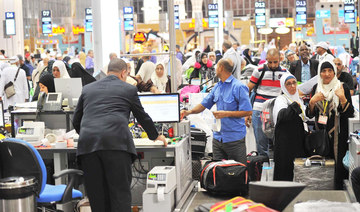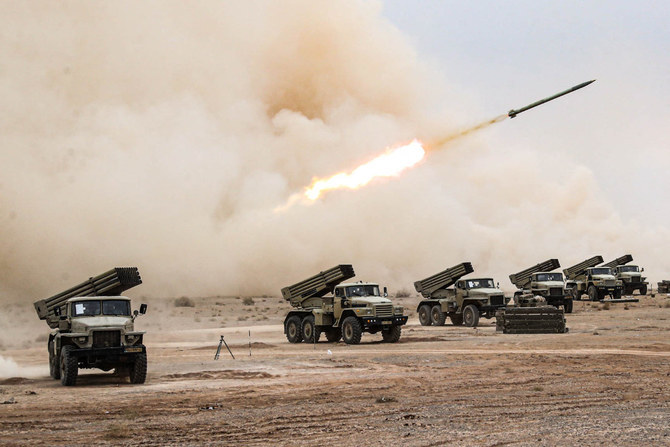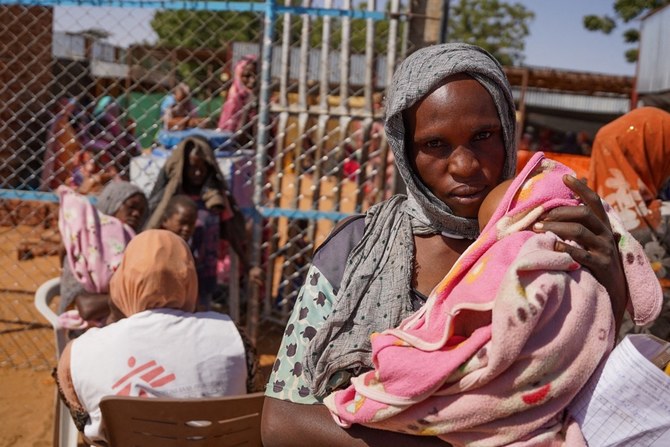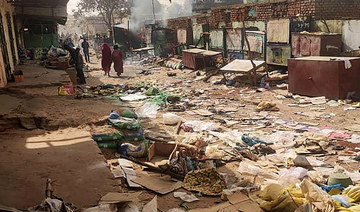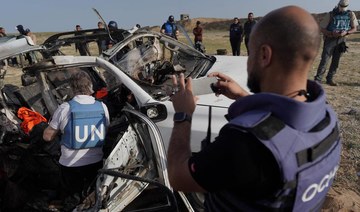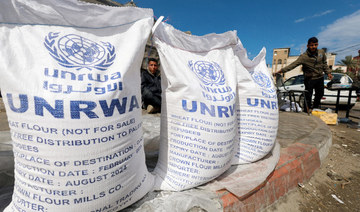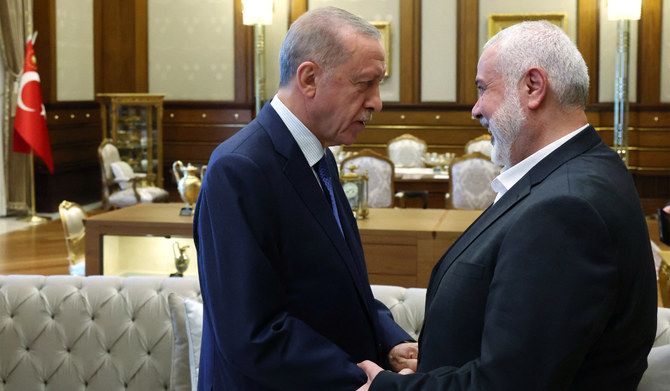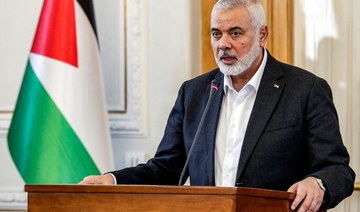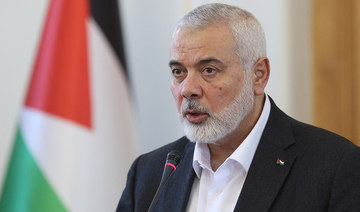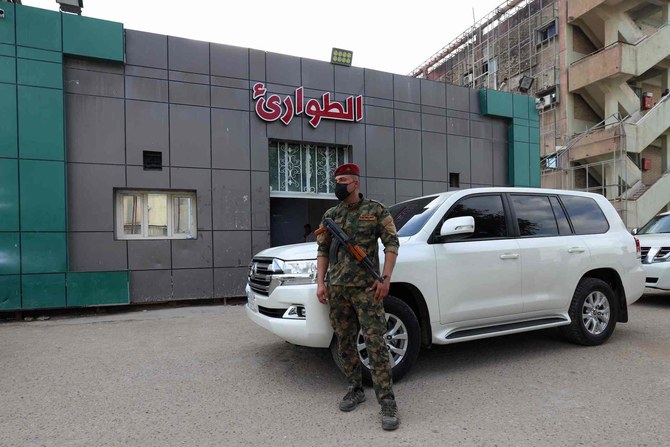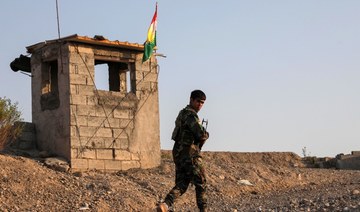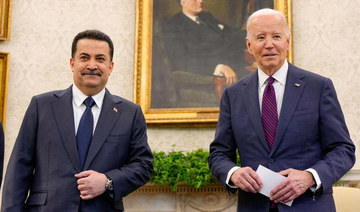LONDON: For centuries, the vast desert sands of the Arabian Peninsula were, at best, an uncomfortable fact of life, an everyday exercise in extreme survival for the tribes that once clung tenaciously to life in arid, inhospitable areas such as the Empty Quarter.
Now, 80 years after the seemingly barren sands gave up the black gold that would transform the fortunes of all the Gulf states, the deserts may hold the key to the next economic miracle poised to transform the region.
However, unlike the vast oilfields that lay unseen deep beneath the sand in eastern Saudi Arabia until 1938, this bounty has been hiding in plain sight all along: the desert sand itself.
As impossible as it might seem, the world is running out of sand — not desert sand, but the stuff found on beaches and riverbeds and under the sea. Grains of rock or shell eroded over time by the movement of water are perfectly shaped for bonding together to make strong concrete. Smooth, wind-sculpted sand is useless for this purpose.
As the author Vince Beiser explains in his book, The World in a Grain, sand “is to cities what flour is to bread, what cells are to our bodies: the invisible but fundamental ingredient that makes up the bulk of the built environment in which most of us live,” and this unsustainable resource has never been more in demand.

Material Finite
As the single most important vital component in every building and road, to say nothing of its starring role in every pane of window glass and the silicon chips of our phones and computers, the world is using more than 50 billion tonnes of sand every year – and rising.
In 2017, a paper in the journal Science spelled out what the authors called the “looming tragedy of the sand commons,” a reference to the fact that because of the difficulties in regulating exploitation, “common-pool” resources such as sand “are prone to tragedies of the commons, as people may selfishly extract them without considering long-term consequences.”
Over the course of the 20th century, the volume of sand and gravel used in creating the rapidly growing cities of the world increased more than 20 times, and today sand is the single most exploited natural resource.
The amount of sand dredged from the rivers, seas and coastlines of the world to create our expanding conurbations is greater than the amount of fossil fuels extracted from the earth.
Scientists from the German Center for Integrative Biodiversity Research say that even where sand mining is regulated, “scarcity is an emerging issue with major sociopolitical, economic and environmental implications.”
One has only to gaze up at the evolving skylines of cities such as Dubai to gain a rough idea of how much concrete went into their creation – and then, perhaps, to wonder where all the sand came from that went into making it.
KEY FACTS
• Finite is able to perform many functions and build many intricate forms and finishes.
• Finite opens opportunities to make use of abundant fine powders that traditionally have had no use.
• Structures made of Finite have the same strength as traditional housing bricks and residential concrete.
• Finite can be remolded for multiple lifecycle uses and is biodegradable.
• The inventors are trying to bring Finite to market with exciting initial opportunities.
The answer is: not from the surrounding desert. Trying to make concrete from the round grains of desert sand, says Vince Beiser, is like “trying to build something out of a stack of marbles instead of out of a stack of little bricks.”
Staring out across the desert from the top of the Burj Khalifa in Dubai, sand is pretty much all that the eye can see. But much of the sand that it took to create the 400,000 square meters of concrete used in the construction of the world’s tallest building was imported from Australia, a fantastically costly and inefficient comment on the environmentally profligate times in which we live.
Unsurprisingly, the search is on for an alternative, and a team of four researchers at Imperial College London believe they have found it. Hamza Oza, Matteo Maccario, Carolyn Tam and Saki Maruyama have named their newly developed material Finite. It is, they say, as strong as concrete, yet has half the carbon footprint.
For obvious reasons, the technical details remain a closely guarded secret. But one vitally important feature has emerged: Finite can be made from desert sand.
If they are right, the four young inventors stand to become extremely wealthy and Finite will disrupt a multi-billion-dollar international mining industry that in 2016 was valued at $8.9 billion in the US alone.
The advantages for the Gulf states, and for every other economy with a desert in its backyard, are plain: no more importing sand from halfway around the world at exorbitant prices, which will slash the cost of development and create a new export business worth billions of dollars.

But there is a potential downside and it is one that must be considered and guarded against now, before it is too late.
Much damage has been done to the maritime ecology of the Gulf since the discovery of oil. Inspiring but rampant coastal development has destroyed marine environments vital for diversity, such as the mangrove fish nurseries that once fringed the shores of the Gulf states.
The thirst for fresh water, met by power-hungry desalination plants, not only contributes to the vast carbon footprint of these air-conditioned countries, but is also polluting the Gulf with super-salinated waste water, wiping out whole species of fish and increasing the size of the enormous “dead zone” in the Arabian Sea.
Finding an alternative to conventional concrete sand would relieve environmental pressure around the world and deliver a huge and entirely unexpected natural windfall to all states surrounded by desert.
But it would be a tragedy if the discovery of the usefulness of this readily available commodity led to an unregulated gold rush capable of destroying the fragile, historic environment in which the first chapters of the Arab story were written.
To this day the vast and largely undisturbed deserts of the Arabian Peninsula are home to a surprisingly varied array of plant and animal life.
They also offer welcome refuge to human beings who, weary of city life, feel the need to recharge their batteries by reconnecting, however briefly, with the beauty of the landscape that shaped their forebears.
As such, the wild deserts of Arabia are as much a priceless cultural treasure as an environmental one, that must be protected at all costs. — Syndication Bureau





